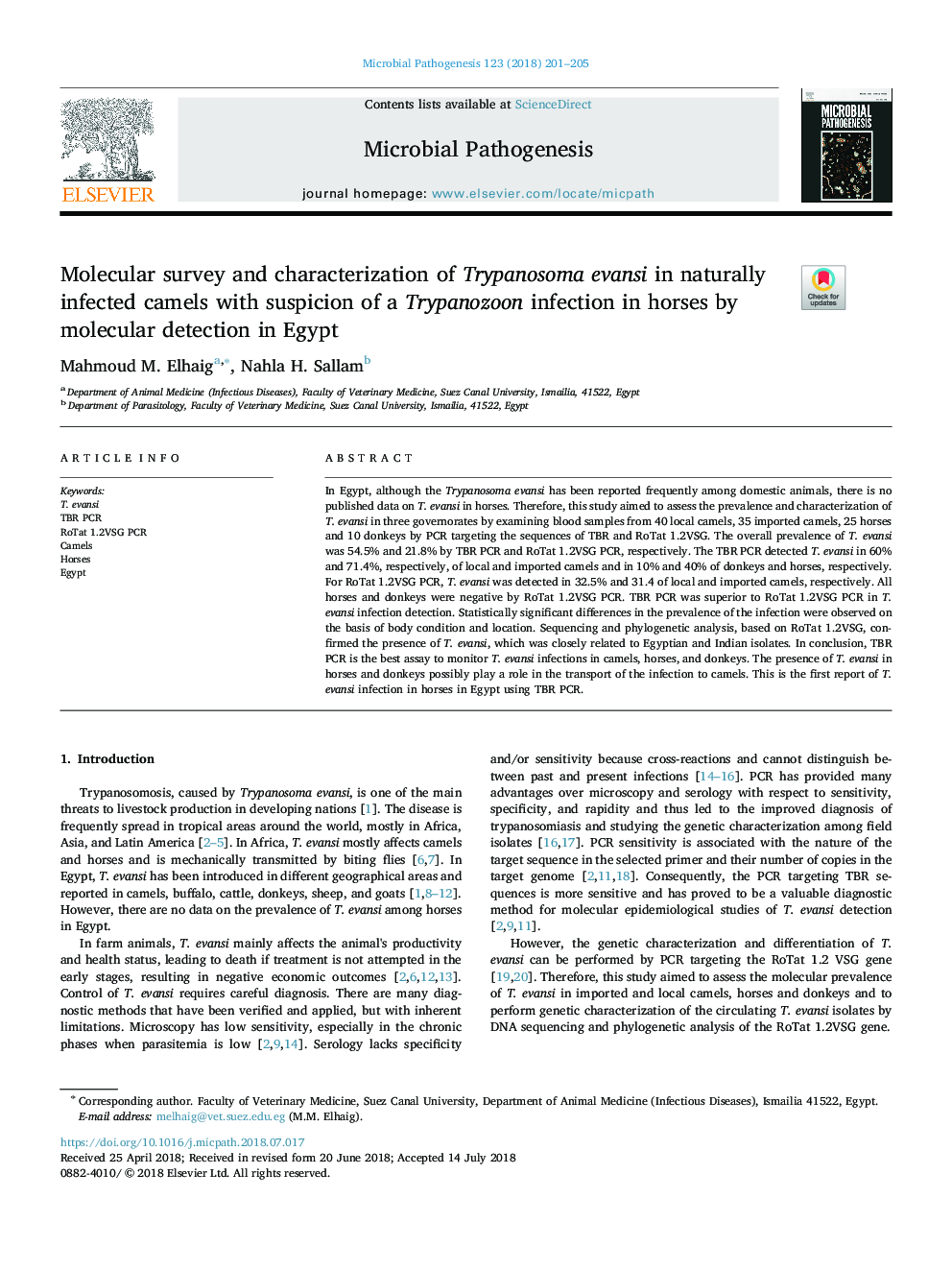| Article ID | Journal | Published Year | Pages | File Type |
|---|---|---|---|---|
| 8749259 | Microbial Pathogenesis | 2018 | 5 Pages |
Abstract
In Egypt, although the Trypanosoma evansi has been reported frequently among domestic animals, there is no published data on T. evansi in horses. Therefore, this study aimed to assess the prevalence and characterization of T. evansi in three governorates by examining blood samples from 40 local camels, 35 imported camels, 25 horses and 10 donkeys by PCR targeting the sequences of TBR and RoTat 1.2VSG. The overall prevalence of T. evansi was 54.5% and 21.8% by TBR PCR and RoTat 1.2VSG PCR, respectively. The TBR PCR detected T. evansi in 60% and 71.4%, respectively, of local and imported camels and in 10% and 40% of donkeys and horses, respectively. For RoTat 1.2VSG PCR, T. evansi was detected in 32.5% and 31.4 of local and imported camels, respectively. All horses and donkeys were negative by RoTat 1.2VSG PCR. TBR PCR was superior to RoTat 1.2VSG PCR in T. evansi infection detection. Statistically significant differences in the prevalence of the infection were observed on the basis of body condition and location. Sequencing and phylogenetic analysis, based on RoTat 1.2VSG, confirmed the presence of T. evansi, which was closely related to Egyptian and Indian isolates. In conclusion, TBR PCR is the best assay to monitor T. evansi infections in camels, horses, and donkeys. The presence of T. evansi in horses and donkeys possibly play a role in the transport of the infection to camels. This is the first report of T. evansi infection in horses in Egypt using TBR PCR.
Related Topics
Life Sciences
Immunology and Microbiology
Microbiology
Authors
Mahmoud M. Elhaig, Nahla H. Sallam,
